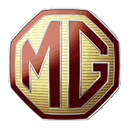Generally, I let the paint cure for about 3 days before color sanding. This is the last thing to do to a top-notch paint job. They call it color-sanding, because we are literally sanding the color coat. (They still call it color-sanding, even when they are sanding clear-coat. Go figure.)
Color sanding involves sanding the paint to a completely smooth and flat surface, then buffing it back to a gloss. The idea is to sand until all of the gloss has been removed. This shows that the entire car has received the treatment. Color sanding is done with a hard block and soapy water, with increasingly-finer grits. Horrendous-seeming flaws like dust specs or sags will take a few passes with 1000-grit, to knock off the worst. Then the whole car is sanded with 1200-grit. Depending upon the hardness of the paint, and the polishing compounds to be used, 1200 may be sufficient to buff. In the case of the newer urethanes, 1500-will be called for. (If we are performing the process on fully-cured paint, we might even have to go up to 2000-grit, since the paint will be so hard that it will break down the polishing compounds before they can do much cutting).
Lots of water and constant rinsing keeps grit and paint off of the work area. When the whole thing has been sanded and rinsed, a soft polishing cloth is used to dry the panel off. (From this point on, the only towels that touch the paint are special polishing cloths, made especially for paint work. They are made from some kind of synthetic that is softer than the paint, so that the only thing scratching the paint are the products that I apply. The brand I use are called Tork 909, but there are many others.) When dry, any un-sanded areas will remain glossy, while the rest of the panel will be evenly dull. When a dry inspection shows that the whole panel has been sanded, we are ready to buff it.
I use a variable-speed rotary buffer, with interchangeable foam pads, one for each product, so that there is no contamination. I start out at a low speed, using a (relatively) hard foam and polishing compound. Working about a 2’ square area, I polish the panel until the compound starts to break down, raising the speed as the product starts to dry. Periodically wiping the panel clean with polishing cloths will allow you to watch the progress. At some point, you will reach a point where the compound can no longer increase the gloss. The panel will be quite shiny, though it will have what are called “swirls”. These are the microscopic scratches left by the compound grit. We now switch pads to a soft foam and use a “swirl remover” which is merely a finer-cutting compound. The whole panel gets the treatment, and the gloss will be even higher.
As we go, we keep a look out for any flaws that did not get sanded. We are talking microscopic at this point, but as the panel gets flatter and glossier, flaws are magnified. Think a large droplet of paint that did not flow out completely. Less than .001”, but still visible. We can still knock them off with a bit more sanding and then buff the panel up again. As a matter of fact, the smoother a paint job is made, the easier it is to care for it.
Once we have removed any swirl marks, we will have a paint job that will win awards. But there is still more to do. We bring out the products called again, glazes, though different from the one we used before. Glaze can be applied by hand or by machine, and different products are made for each method. They each do the same job, hand glazing just takes longer. Don’t ask me what is in this stuff, I have no idea. It seems to have the characteristics of both a compound and a filler wax, but it is neither. It goes on like a creamy liquid, and then sort of breaks down in use. It does remove paint, but I don’t think it cuts. In any case, this stuff is amazing. A few applications of either hand or machine glaze will bring up more gloss than the paint had when originally shot.
Depending upon the kind of paint used, it might be even be possible to wax the car at this point. Generally, the manufacturer requires that several weeks go by before any wax is applied to the paint, to assure that the paint is completely cured.
